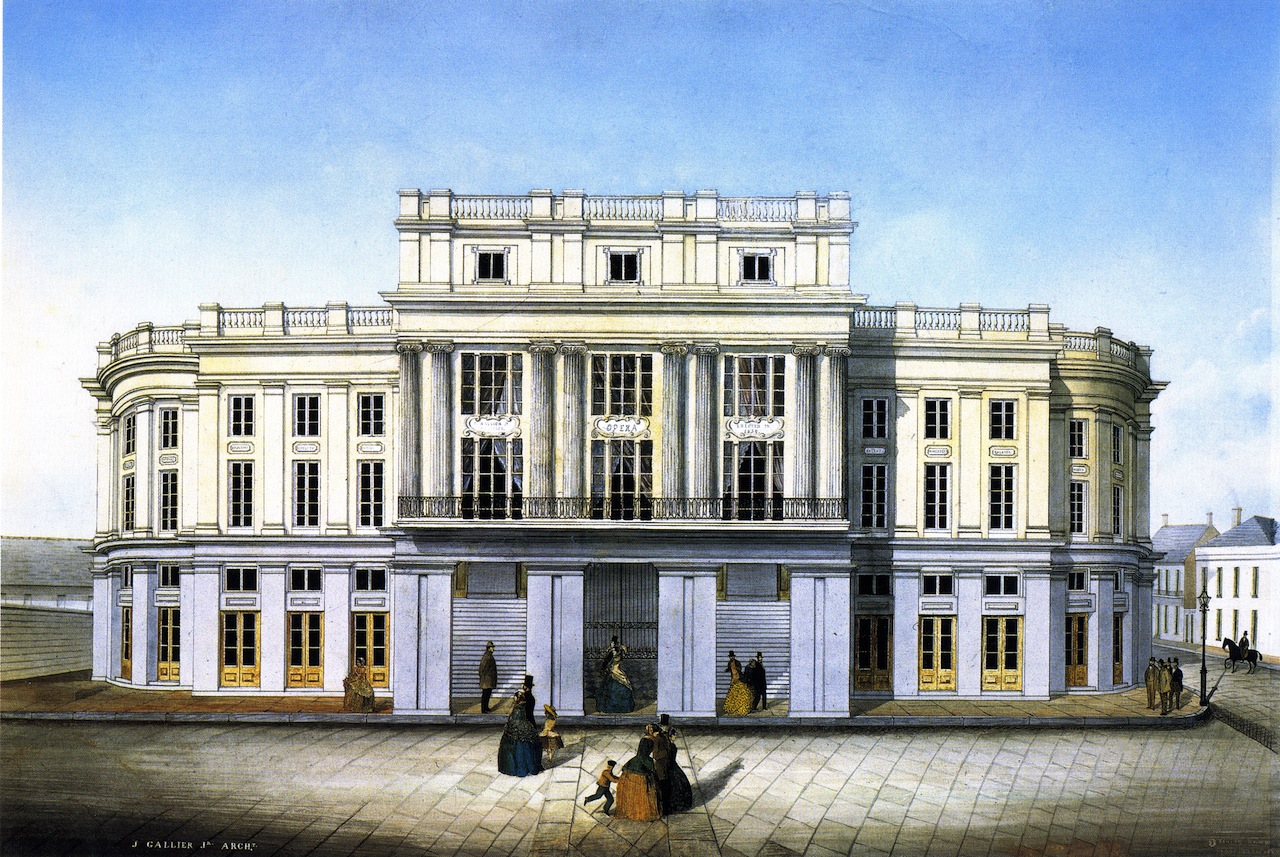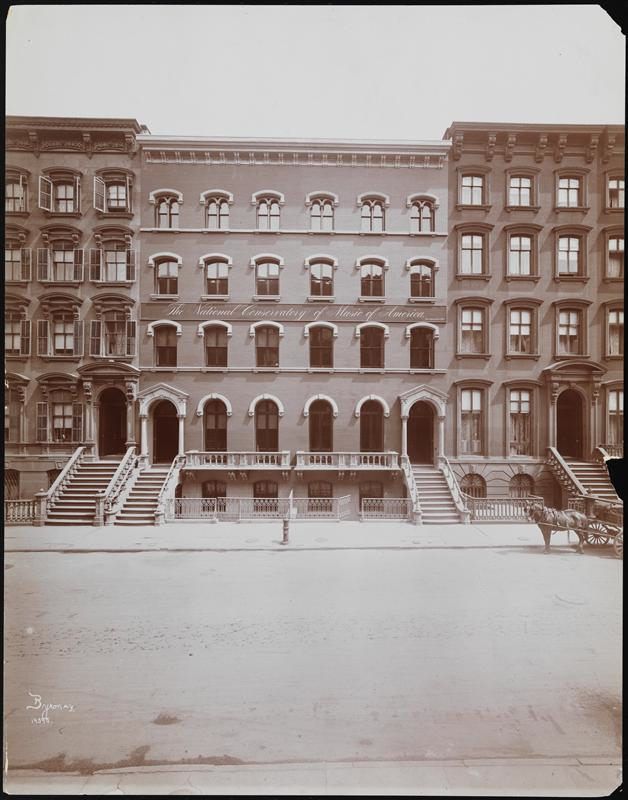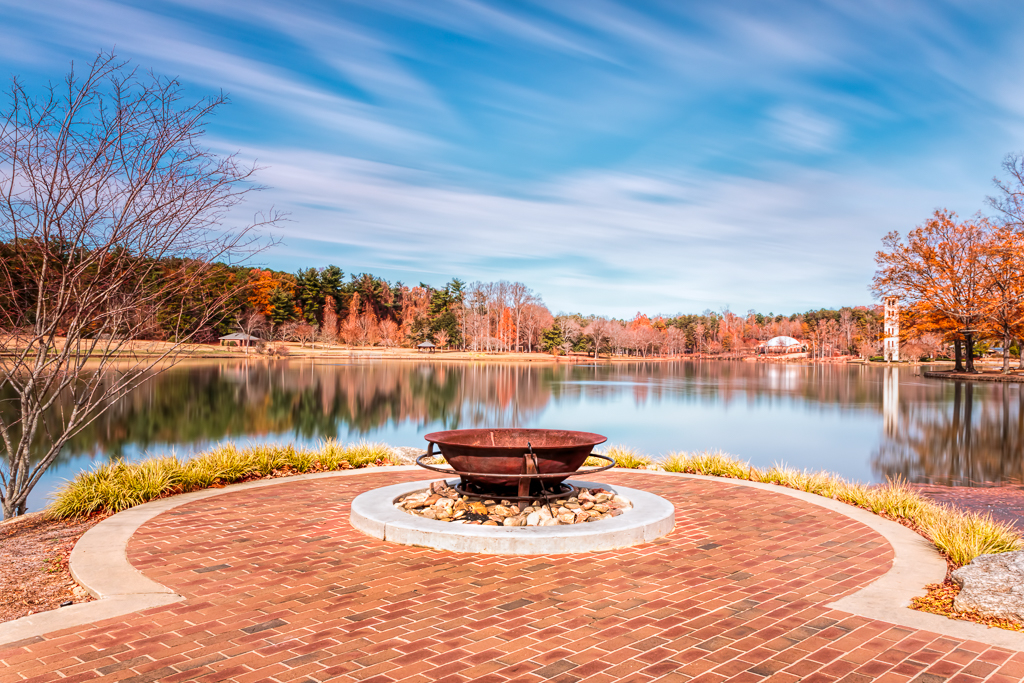|
Giuseppe Ferrata
Giuseppe Ferrata (1865–1928) was an Italian-American pianist, composer, and university professor. He was a student of Giovanni Sgambati and Franz Liszt at the Accademia Nazionale di Santa Cecilia (English: National Academy of Saint Cecilia) in Rome, Italy.Eanes, Edward"Giuseppe Ferrata: Emigre Pianist and Composer."(1995). LSU Historical Dissertations and Theses. Ferrata was knighted by the Royal Court of Portugal, the Royal Court of Belgium, and the King of Italy. Although Ferrata was productive in his early career in Italy, his most notable contributions occurred following his emigration to the United States, especially his time as a professor at Tulane University in New Orleans, Louisiana. His opera "Il Fuoruscito" (English: "The Outcast") won accolades including a significant financial award as part of the Sonzogna Prize. Ferrata composed for two different audiences. Some of his works were composed for their popular appeal. Other compositions were intended to advance orch ... [...More Info...] [...Related Items...] OR: [Wikipedia] [Google] [Baidu] |
Italian Americans
Italian Americans ( it, italoamericani or ''italo-americani'', ) are Americans who have full or partial Italian ancestry. The largest concentrations of Italian Americans are in the urban Northeast and industrial Midwestern metropolitan areas, with significant communities also residing in many other major US metropolitan areas. Between 1820 and 2004 approximately 5.5 million Italians migrated from Italy to the United States, in several distinct waves, with the greatest number arriving in the 20th century from Southern Italy. Initially, many Italian immigrants (usually single men), so-called “birds of passage”, sent remittance back to their families in Italy and, eventually, returned to Italy; however, many other immigrants eventually stayed in the United States, creating the large Italian-American communities that exist today. In 1870, prior to the large wave of Italian immigrants to the United States, there were fewer than 25,000 Italian immigrants in America, many of th ... [...More Info...] [...Related Items...] OR: [Wikipedia] [Google] [Baidu] |
Clarinet
The clarinet is a musical instrument in the woodwind family. The instrument has a nearly cylindrical bore and a flared bell, and uses a single reed to produce sound. Clarinets comprise a family of instruments of differing sizes and pitches. The clarinet family is the largest such woodwind family, with more than a dozen types, ranging from the BB♭ contrabass to the E♭ soprano. The most common clarinet is the B soprano clarinet. German instrument maker Johann Christoph Denner is generally credited with inventing the clarinet sometime after 1698 by adding a register key to the chalumeau, an earlier single-reed instrument. Over time, additional keywork and the development of airtight pads were added to improve the tone and playability. Today the clarinet is used in classical music, military bands, klezmer, jazz, and other styles. It is a standard fixture of the orchestra and concert band. Etymology The word ''clarinet'' may have entered the English language via the Fr ... [...More Info...] [...Related Items...] OR: [Wikipedia] [Google] [Baidu] |
French Opera House
The French Opera House, or ''Théâtre de l'Opéra'', was an opera house in New Orleans. It was one of the city's landmarks from its opening in 1859 until it was destroyed by fire in 1919. It stood in the French Quarter at the uptown lake corner of Bourbon and Toulouse Streets, with the main entrance on Bourbon. The site is currently occupied by the Four Points by Sheraton French Quarter. History Designed by James Gallier Jr., the hall was commissioned by Charles Boudousquié, then the director of the opera company, which had previously made its home in the Théâtre d'Orléans. After a dispute with new owners of the Orléans, Boudousquié determined to build a grand new house for French opera. The building went up in less than a year at a cost of $118,500 and for the next sixty years, it was the center of social activity in New Orleans. Not only opera was held there, but also Carnival balls, debuts, benefits, receptions, and concerts. On May 23, 1859, the ''New Orleans Delta'' ga ... [...More Info...] [...Related Items...] OR: [Wikipedia] [Google] [Baidu] |
Pittsburgh Symphony Orchestra
The ''Pittsburgh Symphony Orchestra'' (''PSO'') is an American orchestra based in Pittsburgh, Pennsylvania. The orchestra's home is Heinz Hall, located in Pittsburgh's Cultural District, Pittsburgh, Cultural District. History The Pittsburgh Symphony Orchestra is an American orchestra based in Pittsburgh, Pittsburgh, Pennsylvania. The orchestra's home is Heinz Hall for the Performing Arts, located in Pittsburgh's downtown Cultural District. The current music director is Austrian Manfred Honeck, who joined the orchestra in 2008, and the current president and Chief executive officer, CEO is Melia Tourangeau. The Pittsburgh Symphony Orchestra has a history of touring both domestically and internationally since 1900. The orchestra currently counts more than 36 international tours, including 20 to Europe, eight trips to the Far East and two to South America. The Pittsburgh Symphony was the first American orchestra to perform at Vatican City, the Vatican in January 2004 for the late ... [...More Info...] [...Related Items...] OR: [Wikipedia] [Google] [Baidu] |
Victor Herbert
Victor August Herbert (February 1, 1859 – May 26, 1924) was an American composer, cellist and conductor of English and Irish ancestry and German training. Although Herbert enjoyed important careers as a cello soloist and conductor, he is best known for composing many successful operettas that premiered on Broadway from the 1890s to World War I. He was also prominent among the Tin Pan Alley composers and was later a founder of the American Society of Composers, Authors, and Publishers (ASCAP). A prolific composer, Herbert produced two operas, a cantata, 43 operettas, incidental music to 10 plays, 31 compositions for orchestra, nine band compositions, nine cello compositions, five violin compositions with piano or orchestra, 22 piano compositions and numerous songs, choral compositions and orchestrations of works by other composers, among other music. In the early 1880s, Herbert began a career as a cellist in Vienna and Stuttgart, during which he began to compose orchestral ... [...More Info...] [...Related Items...] OR: [Wikipedia] [Google] [Baidu] |
National Conservatory Of Music Of America
The National Conservatory of Music of America was an institution for higher education in music founded in 1885 in New York City by Jeannette Meyers Thurber. The conservatory was officially declared defunct by the state of New York in 1952, although for all practical pedagogical purposes, it had ceased to function much earlier than that. Between its founding and about 1920, however, the conservatory played an important part in the education and training of musicians in the United States, and for decades Thurber attempted to turn it into a federally-supported national conservatory in a European style. A number of prominent names are associated with the institution, including that of Victor Herbert and Antonín Dvořák, director of the conservatory from Sep. 27, 1892 to 1895. 34pp. Dvorak was compensated $15,000/year. (It was at the conservatory that Dvořák composed his famous E minor Symphony and subtitled it, at Thurber's suggestion, '' From the New World''.) Active years The i ... [...More Info...] [...Related Items...] OR: [Wikipedia] [Google] [Baidu] |
Arcadia University
Arcadia University is a private university in Glenside, Pennsylvania. The university enrolls approximately 4,000 undergraduate, master's, and doctoral students. The campus features Grey Towers Castle, a National Historic Landmark. History Beaver Female Seminary The school was founded in Beaver, Pennsylvania, in 1853 as Beaver Female Seminary. Beaver College By 1872, it had attained collegiate status, under the auspices of the Methodist Episcopal Church, and was named Beaver College. The school admitted men from 1872 to 1907, then limited enrollment to women until 1972. In 1925, Beaver College moved east to Jenkintown, Pennsylvania, and changed its religious affiliation to Presbyterian Church (USA). In 1928, the school acquired the Harrison estate in Glenside, including Grey Towers Castle, the location of the current campus. The college operated both the Jenkintown and Glenside campuses until 1962, when it consolidated all activities to the Glenside campus. Some significa ... [...More Info...] [...Related Items...] OR: [Wikipedia] [Google] [Baidu] |
Brenau University
Brenau University is a private university with its historic campus in Gainesville, Georgia. Founded in 1878, the university enrolls more than 2,800 students from approximately 48 states and 17 foreign countries who seek degrees ranging from associate through doctoral degrees. The main campus of the Georgia-based institution includes the Brenau Women's College. Brenau also offers another location in Norcross, Georgia. History Brenau was founded in 1878 as a private institution for the education of women. W.C. Wilkes, the institution's first administrator, is credited with building many of the historic buildings that still stand today. Although founders initially called the institution Georgia Baptist Female Seminary, it has never been affiliated with or governed by any religious organization. Through the years Brenau evolved from a proprietary college to a not-for-profit institution governed by an independent board of trustees. Although the residential undergraduate Brenau Wom ... [...More Info...] [...Related Items...] OR: [Wikipedia] [Google] [Baidu] |
Furman University
Furman University is a private liberal arts university in Greenville, South Carolina. Founded in 1826 and named for the clergyman Richard Furman, Furman University is the oldest private institution of higher learning in South Carolina. It became a secular university in 1992, while keeping ''Christo et Doctrinae'' (For Christ and Learning) as its motto. It enrolls approximately 2,700 undergraduate students and 200 graduate students, representing 46 states and 53 foreign countries, on its campus. History Beginnings (19th century) Furman Academy and Theological Institution was established by the South Carolina Baptist Convention and incorporated in December 1825 in Edgefield. With 10 students, it held its first classes January 15, 1828;"Furman University" in ''The New Encyclopedia of Southern Culture'', (Volume 17: Education), Clarence L. Mohr, ed. (UNC Press Books, 2011) p221 although another source says it opened in January 1827. Through 1850, average enrollment was 10 students ... [...More Info...] [...Related Items...] OR: [Wikipedia] [Google] [Baidu] |
Mount St
Mount is often used as part of the name of specific mountains, e.g. Mount Everest. Mount or Mounts may also refer to: Places * Mount, Cornwall, a village in Warleggan parish, England * Mount, Perranzabuloe, a hamlet in Perranzabuloe parish, Cornwall, England * Mounts, Indiana, a community in Gibson County, Indiana, United States People * Mount (surname) * William L. Mounts (1862–1929), American lawyer and politician Computing and software * Mount (computing), the process of making a file system accessible * Mount (Unix), the utility in Unix-like operating systems which mounts file systems Displays and equipment * Mount, a fixed point for attaching equipment, such as a hardpoint on an airframe * Mounting board, in picture framing * Mount, a hanging scroll for mounting paintings * Mount, to display an item on a heavy backing such as foamcore, e.g.: ** To pin a biological specimen, on a heavy backing in a stretched stable position for ease of dissection or display ** To p ... [...More Info...] [...Related Items...] OR: [Wikipedia] [Google] [Baidu] |
Baltimore
Baltimore ( , locally: or ) is the most populous city in the U.S. state of Maryland, fourth most populous city in the Mid-Atlantic, and the 30th most populous city in the United States with a population of 585,708 in 2020. Baltimore was designated an independent city by the Constitution of Maryland in 1851, and today is the most populous independent city in the United States. As of 2021, the population of the Baltimore metropolitan area was estimated to be 2,838,327, making it the 20th largest metropolitan area in the country. Baltimore is located about north northeast of Washington, D.C., making it a principal city in the Washington–Baltimore combined statistical area (CSA), the third-largest CSA in the nation, with a 2021 estimated population of 9,946,526. Prior to European colonization, the Baltimore region was used as hunting grounds by the Susquehannock Native Americans, who were primarily settled further northwest than where the city was later built. Colonist ... [...More Info...] [...Related Items...] OR: [Wikipedia] [Google] [Baidu] |
James Gibbons
James Cardinal Gibbons (July 23, 1834 – March 24, 1921) was a senior-ranking American prelate of the Catholic Church who served as Apostolic Vicar of North Carolina from 1868 to 1872, Bishop of Richmond from 1872 to 1877, and as ninth Archbishop of Baltimore from 1877 until his death. He was elevated to the rank of cardinal in 1886. Gibbons was consecrated a bishop on August 16, 1868, at the Baltimore Cathedral. The principal consecrator was Archbishop Martin J. Spalding. He was 34 years of age, serving as the first Apostolic Vicar of North Carolina. He attended the First Vatican Council, where he voted in favor of defining the dogma of papal infallibility. In 1872, he was named Bishop of Richmond by Pope Pius IX. In 1877, Gibbons was appointed Archbishop of Baltimore, the premier episcopal see in the United States. During his 44 years as Baltimore's archbishop, Gibbons became one of the most recognizable Catholic figures in the country. He defended the rights of labo ... [...More Info...] [...Related Items...] OR: [Wikipedia] [Google] [Baidu] |

.webp/828px-Italian_Americans_(-s_per_state).webp.png)





